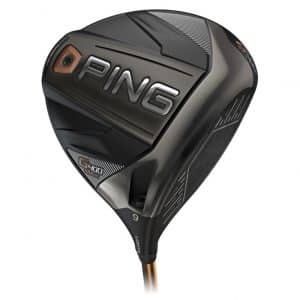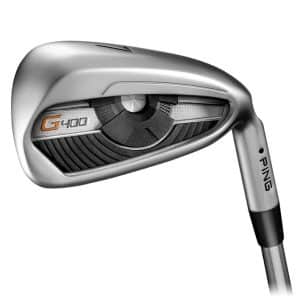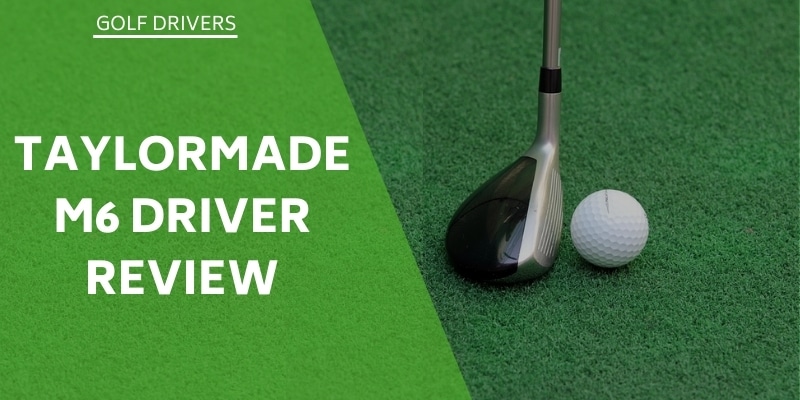Golf equipment innovation is escalating at an impressive pace and getting faster all the time. Nowhere is this more evident than with drivers; typically the most expensive and often perceived as the most important club. We take a detailed look at two outstanding examples of this, the Ping G400 vs the Ping G400 Max.
Research and development have become highly sophisticated. All golf equipment brands are fighting for a larger slice of the lucrative pie. There is pressure to constantly please the market, to improve, and to innovate.
The G400 was already a great driver and the latest iteration, the G400 Max, shows how Ping is striving to please specific aspects of the market. Both are popular and highly rated drivers, but one might be marginally more suitable for your game. This article will look at the technology behind these drivers and the differences between the two.
What to Look For in a Driver?
That is the multimillion-dollar question and one that the leading brands spend much time and effort trying to determine. One of the remarkable things about golf is that it is a sport that can be played on a relatively level playing field by players at all levels, thanks mostly to the handicap system. What this means is that golfers can differ dramatically in ability, swing speed, accuracy, style, and a myriad other factors.
You simply cannot please all the people all the time. This is the very reason the manufacturers make a range of options available. An increase in one element invariably leads to a compromise in other areas.
For example, a driver with more forgiveness might deliver slightly less distance than one designed primarily for speed and carry. You have to look at your strengths and weaknesses and decide where you wish to gain the greatest advantage from design and technology.
Here are a few of the main factors to consider when selecting a new driver:
Distance
This one has to come first as the main purpose of the driver is to gain the maximum distance off the tee. This is particularly important on a par 5 or the long par 4’s. Everyone wants to hit far. It is no good hitting far if the ball goes wildly astray so we will come back to accuracy and forgiveness.
Distance is largely determined by the design, materials, and technology of the driver. The loft degree and spin of the driver are key elements to look at. The loft will impact the launch angle and has a lot to do with how far the ball will carry.
Ball Speed
To produce high ball speed the clubface must create a trampoline effect and expand rapidly when making contact with the ball. The higher the ball speed the longer you will hit your drives.
Head
Large heads on a driver allow the manufacturers to improve the forgiveness and create a larger sweet spot for increased MoI (Moment of Inertia).
You will find that larger heads build more confidence in golfers at address. Regulatory bodies have limited the size of driver heads to 460cc.
Although the larger head on drivers enabled manufacturers to be innovative with the clubface, they had to look at combining materials to keep the weight down.
That being said, a smaller head is more aerodynamic and allows for faster clubhead speed which could give you a distance advantage. Modern design, technology, end materials allow slightly smaller heads to still be highly forgiving.
Adjustability
Many manufacturers have added movable weights on their top-end drivers to enable golfers to set the driver up to create their preferred shot shape. The movable weights furthermore enable golfers to adjust the center of gravity (CoG) to determine the maximum height that you want to it the driver.
Loft and Launch Angle
The loft of the driver plays a significant role in the launch angle of your ball. A higher loft will get the ball into the air quicker and easier than a low loft. Manufacturers have made this easier to get right and many manufacturers allow you to change the loft of the driver to suit your requirements.
Low swing speeds will benefit tremendously from having a higher loft setting. This will get the ball into the air sooner and keep it in the air longer for enhanced distance.
Golfers with fast swings will prefer a lower loft for a more penetrating ball flight. The swing speed will generate sufficient spin to get the ball into the air.
Shafts
The material, weight, flex, flex point, and length of a shaft play a significant role in the way that the driver operates. The incorrect combination of these factors can cause tremendous problems with your driver.
It is always advisable to have a fitting done by your local golf professional to ensure that you get the combination suitable to your swing.
You will find that most drivers today come standard with graphite shafts as they are lighter than steel thus create more speed for your ultimate in driving distance.
Most drivers come standard with shafts measuring between 45.5 and 46.5 inches. The extra length in the driver shaft enables you to create a wider arc and a much higher speed. The extra speed will also aid in achieving longer distances.
Your swing speed will determine the flex of the shaft that you will use on the driver. The faster your swing the more resistance the shaft needs to provide. Extremely fast swing speeds will require an Extra-stiff or stiff shaft while lower speeds could use the Regular shafts.
Below is an indication of the flex of the shaft related to swing speed
- 110mph or higher swing speed needs X flex shafts
- 95 to 110mph swing speed needs S flex shafts
- 85 to 95mph swing speed needs R flex shafts
- 75 to 85mph swing speed needs A flex shafts
- Slower than 75 mph swing needs L flex shafts
Shaft weight is another factor that contributes to your swing speed and distance achieved. Lighter shafts tend to be whippier and this will not produce the best results for fast swing speeds.
This video will give you more insight into shaft flex.
Flex Point
- The flex point is commonly referred to as the kick-point. This is a region of approximately 2 inches on the shaft where most of the twisting occurs and has a tremendous effect on the ball flight. For a lower ball flight, a higher kick point is advised.
It is worth noting that there are differences between the Ping G400 and the Ping G400 Max although some of these differences tend to be negligible.
- The assessment below is based on the two drivers being fitted with the same shaft, using the same loft
Target Market for the Ping G400 and G400 Max
- The Ping G400 is more suitable for mid-handicappers while the Ping G400Max is aimed at high handicap golfers.
Ping’s famous Dragonfly technology helps to keep the center of gravity as low as possible. The textured face helps in minimizing spin because of the increased friction.
The high MoI combined with the low Center of Gravity results in the G400 MAX producing an extremely tight dispersion.
G400
The Ping 400 has a smaller, streamlined shaped head than the Ping G400 MAX and is more suitable for experienced golfers with a more consistent swing. The advanced shape produces more speed, better aerodynamics, and stability. The shape combined with the bolder turbulators and Vortec Technology reduces the drag by 40% mid-downswing and 15% overall increase in clubhead speed.
The lie angle settings and the loft of the Ping G400 driver are adjustable between neutral, plus, or minus.
Both the Ping G400 Max and the Ping G400 come with tungsten weight at the back of the head and Ping’s dragonfly technology. The dragonfly technology produces an ultra-thin crown and skirt resulting in saving some weight and an optimized location of the CoG. This leads to an increase in the MOI for greater forgiveness and accuracy.
These drivers are not aimed at the same market segment and it is difficult to determine a winner between the two. Both are popular drivers that are highly rated by most that have invested in them. They are on the upper end of the price scale but are quality drivers that should last a long time and have the potential to improve your results off the tee.
Advanced golfers will benefit more from the Ping G400 while mid to high handicappers will benefit more from the technology used in the Ping G400 Max.
Features of the Ping G400 vs G400 Max
Head Size
- The Ping G400 Max comes with a head size of 460cc while the Ping G400 comes with a head size of 445cc giving the G400 a smaller footprint. This means that the G400 is marginally more forgiving while the Max is more aerodynamic.
Clubhead Shape
- The G400 Max driver has a larger footprint and profile than the G400, and sports a sleek, highly aerodynamic, speed-inducing shape. The larger head creates a deeper crown sitting further back then the G400.
Clubface
- Both the Ping G400 Max and Ping G400 comes with a forged to flex face. The forged face flexes more for increased ball speed resulting in longer drives. The texture of the face leads to an increase in friction thus reducing spin.
Launch Angle and Spin
- The Ping G410 Max has a higher moment of inertia and the Ping G400 tends to have a slightly lower launch angle and lower spin rate.
- The launch angle on the Ping G400 Max is 14.1 degrees and, on the Ping G400 it is 12.9 degrees
- The spin rate on the Ping G400 Max is approximately 20% higher than the Ping G400.
Clubhead Speed
- Enhanced aerodynamics and a smaller clubhead on the Ping G400 make it easier to swing and produce a faster swing speed than the Ping G400 Max.
Ball Speed
- The Ping G400 Max generates slightly lower ball speeds than the Ping G400.
Distance
- The Ping G400 Max is not aimed at a maximum distance but rather accuracy. The Ping G400 has an advantage when it comes to the ultimate distance.
Bias
- The Ping G400 Max has left and fade bias and the Ping G400 is a neutral club without any left or right bias.
Accuracy
- The Ping G400 Max driver offers more control and accuracy along with a slightly higher angle of attack and provides a tighter dispersion than the Ping G400 driver.
Consistency
- The Ping G400 Max provides more consistency on off-center shots the dispersion is much closer to the G400 Max.
Dispersion
- The G400 Max driver is more forgiving and produces better ball speeds across the entire face resulting in a much tighter dispersion than the standard G400.
Forgiveness
- The G400 Max head is 15 cc larger and provides more forgiveness. The larger head of the G400 Max produces an MoI of 9900 g/cm2 and the G400 head produces an MoI 9000 g/cm2. According to Ping the higher Moi offers more forgiveness and increased ball speeds throughout the entire clubface
Sound and Feel
- Although sound and feel depend on the golfer’s personal preferences some found that the Ping G400 Max sounds slightly “clicky”. Ping engineers made us of computer simulation coupled with music theory during their research and came up with rib architecture that produces finely tuned frequencies for a deeper and muted sound. This technology was patented by Ping.
Appearance
- Another nice upgrade on the G400 Max is the appearance. The graphics on the sole have chrome lettering, but the biggest visual change is the face.
- The G400 comes with bolder crown turbulators to improve the visual appeal. Some love the look while others are not crazy about them.
Related Articles
- Ping G700 Irons Review
- The Best Golf Driver For Distance
- The Most Forgiving Drivers to Improve Your Distance & Accuracy
- The Best Golf Drivers
Nick is the founder of GolfSpan and an avid golfer. He's not quite a pro but has over 15 years of experience playing and coaching golfers worldwide. His mission is to bring the golfing community a better experience when it comes to choosing the right golf gear and finding the right setup for your game.








